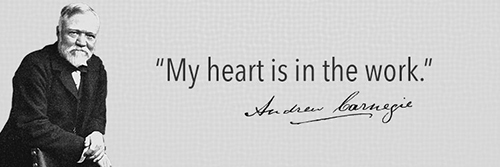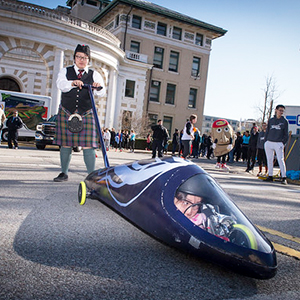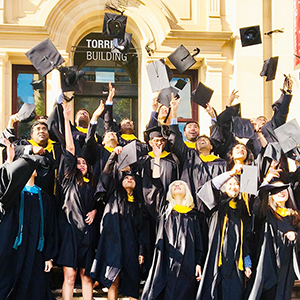Look at Carnegie Mellon
CMU's History

In a letter written in 1900, industrialist and philanthropist Andrew Carnegie offered to give the city of Pittsburgh $1 million in bonds to found a technical institute. The city provided 32 acres of land near Schenley Park, and the institution became known as the Carnegie Technical Schools. According to Carnegie's plans, the institution would train the sons and daughters of working-class families in five schools: Science and Technology, to train draftsmen and engineer's assistants; Fine and Applied Arts, for designers and art workers; Apprentices and Journeymen, for mechanics in manufacturing and construction; and Margaret Morrison Carnegie College, for home economists or secretaries. Within two decades, the Carnegie Technical Schools offered bachelor's, master's and doctoral programs, and fittingly changed its name to the Carnegie Institute of Technology.
In 1967, the trustees of the Mellon Institute and the Carnegie Institute of Technology merged the two institutions and adopted the name Carnegie Mellon University. In 1968, Margaret Morrison Carnegie College closed and the university organized a new College of Humanities and Social Sciences. New graduate-level colleges and schools also flourished, including the Graduate School of Industrial Administration (GSIA), the Heinz College of Public Policy and Management, and the School of Computer Science. As time progressed, new research centers and institutes developed on and off campus in specialties ranging from art conservation to sustainable computing. In 2004, GSIA was renamed the Tepper School of Business after alumnus David A. Tepper.
Over time, the Carnegie Institute of Technology has developed from a regional, technical college into Carnegie Mellon University, a selective, international research university that ranks among the nation's best colleges.

A Unique Educational Experience
The university's diverse community, focus on strong student-faculty ties and commitment to education outside the classroom combine to create a learning environment that is as uniquely Carnegie Mellon as the Tartan plaid on the kilts of its bagpipers.
Carnegie Mellon strives for a campus culture that reflects a fundamental respect for different ways of living, working, and learning so every student has the opportunity to reach their potential.
A Carnegie Mellon education is marked by its strong focus on fundamental and versatile problem-solving skills in a specific discipline, but the university respects and values students' varied talents and interests that often span many specialties. Students can explore more than one field of study while developing the strong professional core that is the hallmark of a Carnegie Mellon education. The university encourages students to expand their thinking in new and exciting dimensions.
CMU's faculty conduct groundbreaking research, create new and exciting art, and contribute to a growing global scholastic community. They are continuously innovating, and the new knowledge they create and the methods they discover routinely benefit classroom learning. Research is a vital component of undergraduate education at Carnegie Mellon. Students can initiate projects of their own or become involved with existing ones on campus.
A Global Impact

In its 115 years, Carnegie Mellon has soared to national and international leadership in higher education and research. A birthplace of innovation since its founding, it continues to be known for innovation, for solving real-world problems and for interdisciplinary collaboration.
Its alumni can be found across the globe — from Tony Award winners to Nobel Prize and Turing Award winners, from CEOs to entrepreneurs, from professors to artists.
In the 2000s, in response to demand for expanded international educational opportunities, Carnegie Mellon began offering degree programs outside of Pittsburgh. Today its global presence includes campuses in Qatar and Silicon Valley, California, more than a dozen degree-granting locations, and more than 20 research partnerships such as Los Angeles, New York City, Washington, D.C., Portugal, and Africa.
